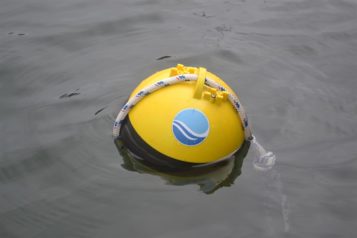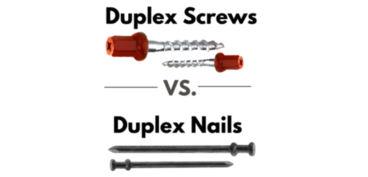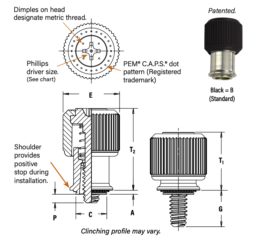The American Steel Nail Coalition, which represents the vast majority of U.S. nail manufacturers, filed an Amicus Curiae brief today in support of the U.S. Government, which has been trying to prevent a flood of foreign nail imports in circumvention of 2018 tariffs on steel. The Government has appealed a decision last year by the U.S. Court…
ZAGO sustainable sealing screws making a difference for the fishing industry
Did you know approximately 640,000 metric tons of fishing gear is lost every year, polluting ocean waters and devastating marine ecosystems? For fishers and fisheries, replacing lost fishing gear is costly and income lost to “ghost fishing” is irreplaceable. However, the smart Farallon Buoy by Blue Ocean Gear eliminates these issues, providing real-time tracking and…
What are Pozidriv screws?
Written by Jody Muelaner Pozidriv screws are externally threaded fasteners with torquing heads, which feature a cruciform socket with radial indentations that are set at 45 degrees from the main cross. Pozidriv describes the screw drive type of the socket and driver, and is one of the most common screw drives used worldwide. Often abbreviated…
What are tamper-proof seal screws and when should you use them?
Written by Kim Keating, Director of Customer Success ZAGO Manufacturing Co. Security or tamper-proof seal screws are vital for securing indoor and outdoor high-asset machinery and the sophisticated components within them, such as 3D cameras and sensors. These specialty seal screws prevent contaminants from leaking in or out of equipment. They also contain a locking…
What is the difference between Duplex Nails and Screws?
Written by Pam Berry, Owner | VP of Marketing Advance Components Duplex Nails and Screws are flanged-head or double-headed fasteners that are often used to build temporary structures such as braces, scaffolding, and concrete formwork. They’re designed to be removed with ease, so they do not completely go into the wood during installation. First came…
These fasteners offer a strong hold in dense wood and prevent splitting
Earnest Machine, a master distribution and manufacturer of industrial fasteners, is prepared for the wood building requirements you need. The company’s Timberjack Premium Timber Screws are designed to enter into wood easier, hold stronger, and offer excellent corrosion resistance in pressure-treated wood applications. In fact, Timberjacks feature a special “U” thread that locks the screw…
Prevent loose hardware with PEM captive panel screws
PennEngineering‘s popular line of PEM PF11 captive panel screws are designed to keep parts to a minimum, preventing hardware loss by staying securely attached to metal panels or other thin material components. These captive panel screws are an ideal choice for use in datacom or telecom applications, where installation footprints are limited and where fastening…
IronRidge simplifies solar installations with ground-screw foundation method
IronRidge, an ESDEC company, has successfully streamlined the process of designing and installing ground-mount, solar-power arrays when using ground screws as the foundation method. In March, the company completed compatibility testing with Krinner Foundations G-Series ground screw and American Ground Screw’s Model-3 ground screw, and now offers a certified systems engineering letter. Both ground screw…
NBK adds plastic head-socket screws to its product portfolio
NBK, an advanced component manufacturer, recently added a new fastener to its product offering: the hex-socket, plastic head-cap screws. The hex-socket, head-cap screws are made of PEEK GF30, containing glass fiber for increased strength. The tensile strength of the material is about 1.7 times that of conventional PEEK material. PEEK is a thermoplastic super-engineering plastic,…
WIDIA expands TDMX drill platform to machine stainless steel and super alloy
WIDIA, a brand offering quality tooling and metal-cutting products, has launched a new MS geometry insert for the brand’s best-selling TOP DRILL Modular X (TDMX) drill. With the MS geometry expansion, the TDMX platform now offers three material-specific inserts — broadening the platform’s application capabilities to include inclined entry and exit, stacked plates and…










